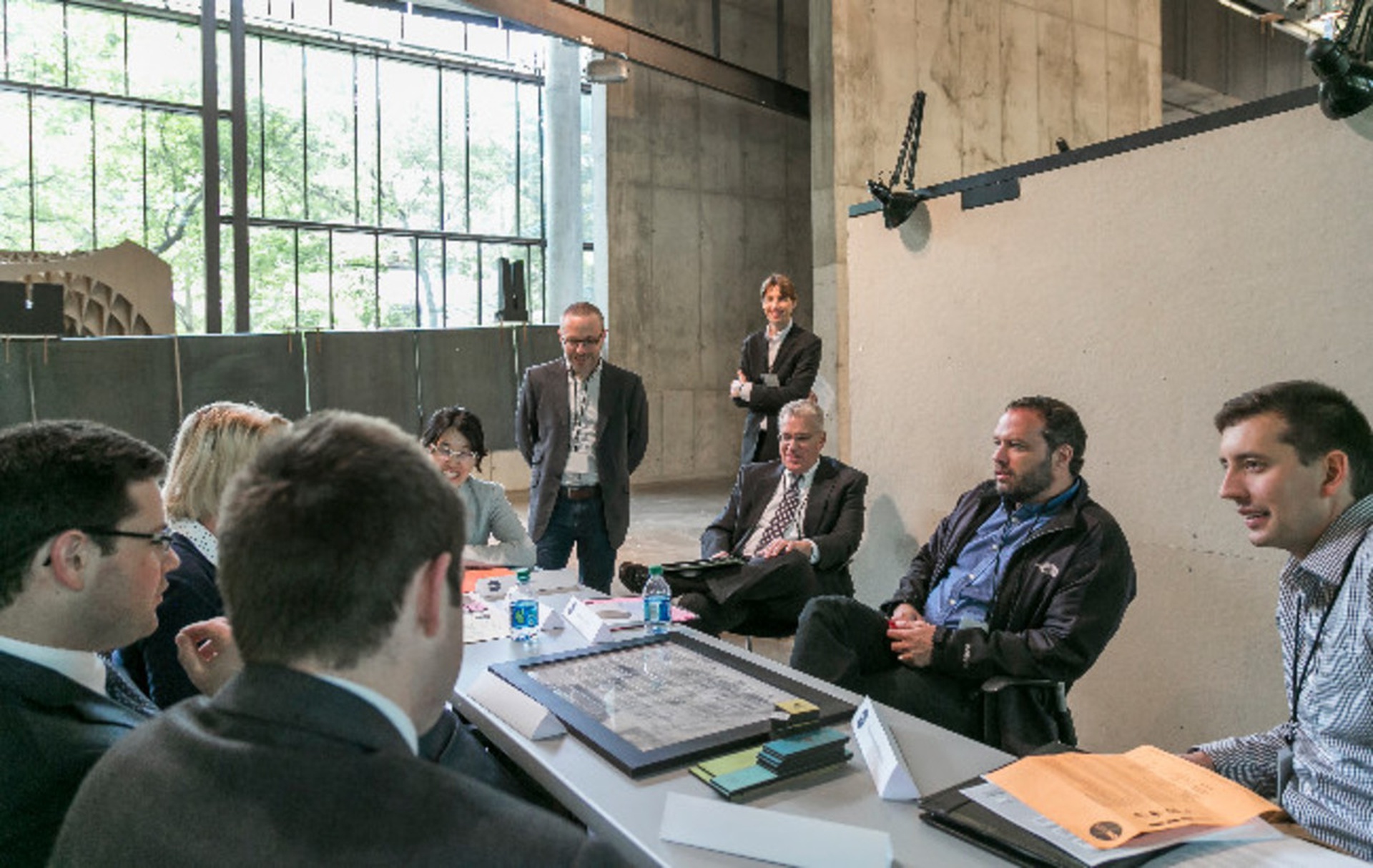Ohio Land Exchange teaching communities how to reuse abandoned land
The Ohio city of Faurotopia has fallen on tough times. Jobs are scarce, the population is shrinking and vacant or abandoned homes are starting to multiply. Fortunately, experts from The Ohio State University are working to fix the city from the ground up.
Okay, Faurotopia isn’t real. But the Ohio Land Exchange program at the Knowlton School of Architecture is using the woes of this make-believe town to help Ohio communities solve a very real problem.
“We're trying to help them think more proactively and strategically about the kinds of opportunities that are presented by the presence of this essentially low-cost land in their community,” said Mattijs van Maasakkers, assistant professor of city and regional planning at the Knowlton School.
The fake town is part of a daylong workshop to help teach managers of county land banks how to think about vacant and abandoned property in a holistic fashion. The process includes collecting data about the vacant properties, mapping their locations and bringing together community leaders to find ways to buy and reuse the land.
|
| The map board simulates Faurotopia's land problems. Photo: Phil Arnold |
Land bank managers from Trumbull, Cuyahoga and other counties across the state joined members of university Extension offices to simulate ways to solve the problems of Faurotopia – and in the process fix their own communities.
It’s a real problem in Ohio. A 2016 report by Greater Ohio Policy Center found that more than 20 cities of over 20,000 people have seen “significant” declines in population over the last 30 years. That’s leading to more abandoned property.
“It is a very large issue. We’re dealing with large areas of vacant land for a small to mid-sized city,” said Cassandra Clevenger, program manager for Garden Resources of Warren in Trumbull County.
Clevenger provides technical support to more than two dozen community gardens in the city of Warren, and is part of the management of the Trumbull County land bank. She said the data collection techniques developed by the Ohio Land Exchange would help her community.
“Everything with land reuse comes back to the soil,” she said. “If you’re going to put anything on there, if you’re going to put people on there, you need to know what’s going on.”
The Ohio Land Exchange is the brainchild of van Maasakkers and landscape architecture faculty Kristi Cheramie and Jake Boswell. A pilot program in Lima has helped that town get its arms around the problem.
Students from the Lima campus helped map the details on more than 700 tax-delinquent properties around the city. They also engaged community organizations from arts groups to hospitals about possible uses for the land. The method helped find more opportunities for the vacant lots.
“What we are trying to do with this process is to help decision-makers move from a situation where they are confronted with high levels of tax delinquency and are simply trying to take down as much dilapidated housing as they can and then worry about reuse later,” van Maasakkers said.
Now the program leaders hope to spread this assistance across the state. The Ohio Land Exchange has been awarded a Connect and Collaborate grant to extend the program to counties throughout Ohio by collaborating with Extension offices and the local land banks.
Clevenger said the help can’t come soon enough.
“We have more houses to bring down, which will only create more vacant land,” she said.



